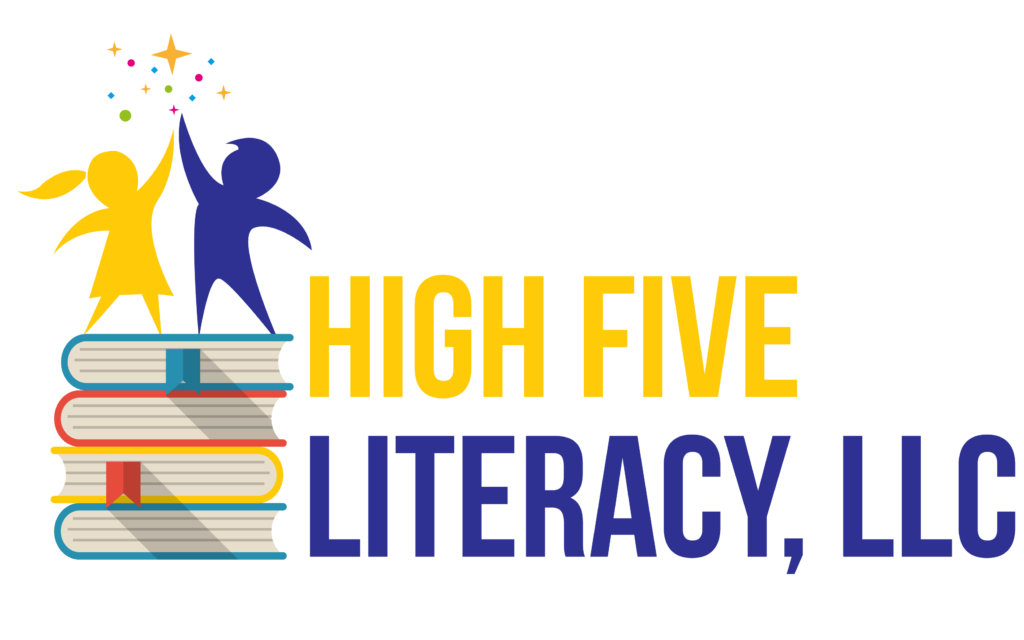
I can’t even imagine how many teachers/districts will send in applications and plunk down $600 to $650 per person to take the Teachers College program entitled the Intersection of Dyslexia and the Reading Workshop? After all, it sounds like a great, cutting-edge opportunity to learn how to help all students succeed from the self-proclaimed leader in literacy education, right?
Well… it is an “opportunity,” that’s for sure. It’s just not the kind of opportunity so many well-intentioned educators may think. Rather, for those of us who know first-hand how damaging TC has been to literacy education in this country, it’s an opportunity for TC to pacify critics. It’s an opportunity for TC to make even more money fixing the casualties of its flawed program. It’s an opportunity for administrators to tell parents that there is a phonics component to their curricula, and that there is no need for anything else because kids are now getting the right “balance.” It’s an opportunity to keep the status quo going.
It’s an opportunity for all concerned to feel good about themselves, except, of course, for the kids who are the true victims of this white-collar crime.
Below is a breakdown of the marketing blurb from the Teachers College website. The text of the blurb is italicized. My response/comments are inserted in bold print:
“We have all heard the call from parents, policy-makers, and educators to support students with—or at risk of having—dyslexia. TCRWP has dedicated significant time to studying dyslexia over the past few years, both internally and with renowned partners such as The Child Mind Institute. This mini-institute will share new learning about how to support students with dyslexia in reading workshop.”
Yes, TCRWP heard “the call” loud and clear. So, it spent significant time figuring out how to fit a square peg into a round hole. What TCRWP doesn’t acknowledge is that the children who are “at-risk” are actually put at risk by TCRWP’s flawed instruction from the outset. This all sounds like a “low-fat” ice-cream ad. Everyone knows it’s bad for you, but it gives people the feeling that they can indulge because it is a healthier option. It’s not.
“Each day of this institute will be divided into two parts. As a whole group, we will study dyslexia and how it affects the brain, alongside The Child Mind Institute. We’ll share new research that provides a picture of how students may present in classrooms and the next steps you can take to support these students. You will, for example, learn about the specific type of phonics instruction necessary for students with dyslexia, technology that provides greater access to these students, and the methods of instruction that will best support learners.”
Drum roll, please. What does this even mean? Does it mean the “type of instruction” that doesn’t encourage kids to use contextual cues to figure out words? Does it mean that teachers will no longer be taught to tell kids to just look at the first letter? And what is the “specific type” of phonics instruction the blurb is referring to? If it means the explicit, systematic, and structured type, I don’t see how what TCRWP is proposing is even possible. True structured phonics instruction requires a scope and sequence of skills that build cumulatively. It can’t be plugged in as a stopgap to fix a faulty program, particularly for those kids who are struggling. Unlike the “word-solving” methods endorsed by TCRWP, kids actually need to be taught to decode. And wouldn’t that make sense for ALL kids in the early grades?
“Another portion of each day will be dedicated to learning in grade-level bands. The demands of K-2 teachers are different from those 3-8. Participants who work with students in primary classrooms will learn how to identify which kids may be at risk and then study the supports that those students need if they are to continue learning and growing alongside their peers. We’ll share quick assessments that can quickly direct you to the teaching that students need most.”
What’s interesting about the wording of this description is that it essentially states that it is the kids’ fault for not fitting into TCRWP’s model of instruction. Once they do a quick assessment, then “those” kids who can’t learn through osmosis will receive the “teaching that students need most.” Huh?? Wouldn’t that be a structured approach? Shouldn’t that be the goal of K-2 reading instruction for everyone??
“For example, you’ll see how to use phonological awareness assessments to stay on top of this growth and ensure students do not end up with gaps in this necessary skill.”
How will they “stay on top of this (phonological awareness) growth”? What does this even mean??
“It will be important to learn how students learn to phonic decode and orthographically map words. We’ll show you how to adjust your whole-class teaching, such as shared reading, to promote these skills and you’ll see videos of teachers coaching readers during conferring in ways that support independence with both phonic decoding and orthographic mapping.”
This makes absolutely no pedagogical sense! So… shared reading will include phonic decoding lessons and orthographic mapping?? How?? It seems like great effort was taken in drafting this blurb to include all the right tag lines and cover all bases to make it sound impressive. It doesn’t say whole class phonics lessons will be used with decodable books that support independent practice of such skills. That would show real commitment to change.
“Participants who support older students have a unique challenge. When our students hit grades three and above, deciding on the best supports and pathways can be difficult.”
Here is where we agree. Older students who received years of Balanced Literacy instruction are absolutely more of a challenge. Too bad TCRWP is not taking responsibility for harming such students. You have to wonder if it’s even recognized.
“We’ll help you answer questions like: Does intensive phonics support look different for a 9-year-old than a 6-year-old? What is the role of decodable texts in the upper grades? If a student was identified at an early age and received services, what, besides phonics, needs to be done to support students with dyslexia? In what ways might comprehension, fluency and writing be supported?”
In other words, how can teachers in the upper grades clean up the mess after the problem has become more than phonological deficits and decoding difficulties? Is it possible to close the gap at this point? Isn’t it clear that “intensive support” for 9-year-olds must include hours of reinforcement and practice in the underlying skills?
“We’ll share the most important assessments teachers can provide to students that can help you devise a trajectory forward. You’ll learn that many children in third grade or above who have difficulty reading have gaps in phonological awareness and hear how you can teach this skill to students in upper-grades. We’ll help you envision ways to balance teaching decoding with teaching comprehension.”
If gaps in phonological awareness are only first looked for or noticed in the third grade, then TCRWP’s new institute will change nothing! If decoding were taught well in the beginning, there would be no need to have to balance decoding with comprehension later on. The kids need to learn how to “read” words from the beginning. “Devising a trajectory forward” is a steep climb when the foundation is only first taught after third grade.
“For example, we’ll share how students might spend a portion of reading workshop studying phonics principles and reading books and another portion listening to audiobooks in a way that allows students to continue to strengthen their age-appropriate comprehension skills as their decoding skills catch up.”
Reality check: spending a portion of Reading Workshop would be 20 minutes? Half hour? How does this close the gap? Who will be providing the intervention?
“Most importantly, we’ll help you to protect student dignity while supporting their budding reading identities.”
Now, this is funny. What is “reading identity”? Who comes up with this nonsense? The way to protect student dignity is to let the children know that it wasn’t their fault! Protect them by tossing out this flawed and dangerous model of instruction from our schools! Enough cow-towing to elitists who sit in ivory towers and don’t work with children!!
“This institute is meant to merge theory and research with in-classroom practice so that you can ensure all of your students grow as readers.”
Kumbaya……..
Cost
$650/$600 NYC DOE
Choking now….
Where
This institute will be offered online, in real-time via Zoom, and will not be recorded for later distribution.
I wonder why….
We will accept attendees until the institute has reached capacity.
One hundred? One thousand? Ten thousand? More? Multiply by $600/650. Not bad.
Faith Borkowsky is the founder of High Five Literacy and Academic Coaching with over thirty years of experience as a classroom teacher, reading and learning specialist, regional literacy coach, administrator, and tutor. Ms. Borkowsky is a Certified Dyslexia Practitioner and provides professional development for teachers and school districts, as well as parent workshops, presentations, and private consultations. Ms. Borkowsky is the author of the award-winning book, Failing Students or Failing Schools? A Parent’s Guide to Reading Instruction and Intervention and the “If Only I Would Have Known…” series. She is also a board member of Teach My Kid to Read, a 501(c) non-profit organization with a mission to support and empower students, teachers, and parents through education so all kids, including those with dyslexia, learn to read.

4 Comments. Leave new
Faith is amazing at calling teacher college as it is. Not appropriate for any child. Creating awareness for proper reading instruction. When will they get that this approach is more harmful for all children.
So why are schools drinking the Kool Aid?
The curriculum and instruction leaders at the schools need to start doing their job! Faith, thank you for sharing your thoughts in a way that gets to the very heart at what is going on nationwide. I applaud you!
Ugh. So during one part of reader’s workshop kids will be given a phonics patch, during another part they will be given leveled text to read where the students will be unable to use any of the phonics skills they might have learned. Then, lots of random “comprehension skills” like finding the main idea of random texts. Luckily, the students will have a 5 min conference with the teacher once every two weeks to get a quick teaching point. The whole thing is such a mess. You can’t fit research-based instruction into that mess.